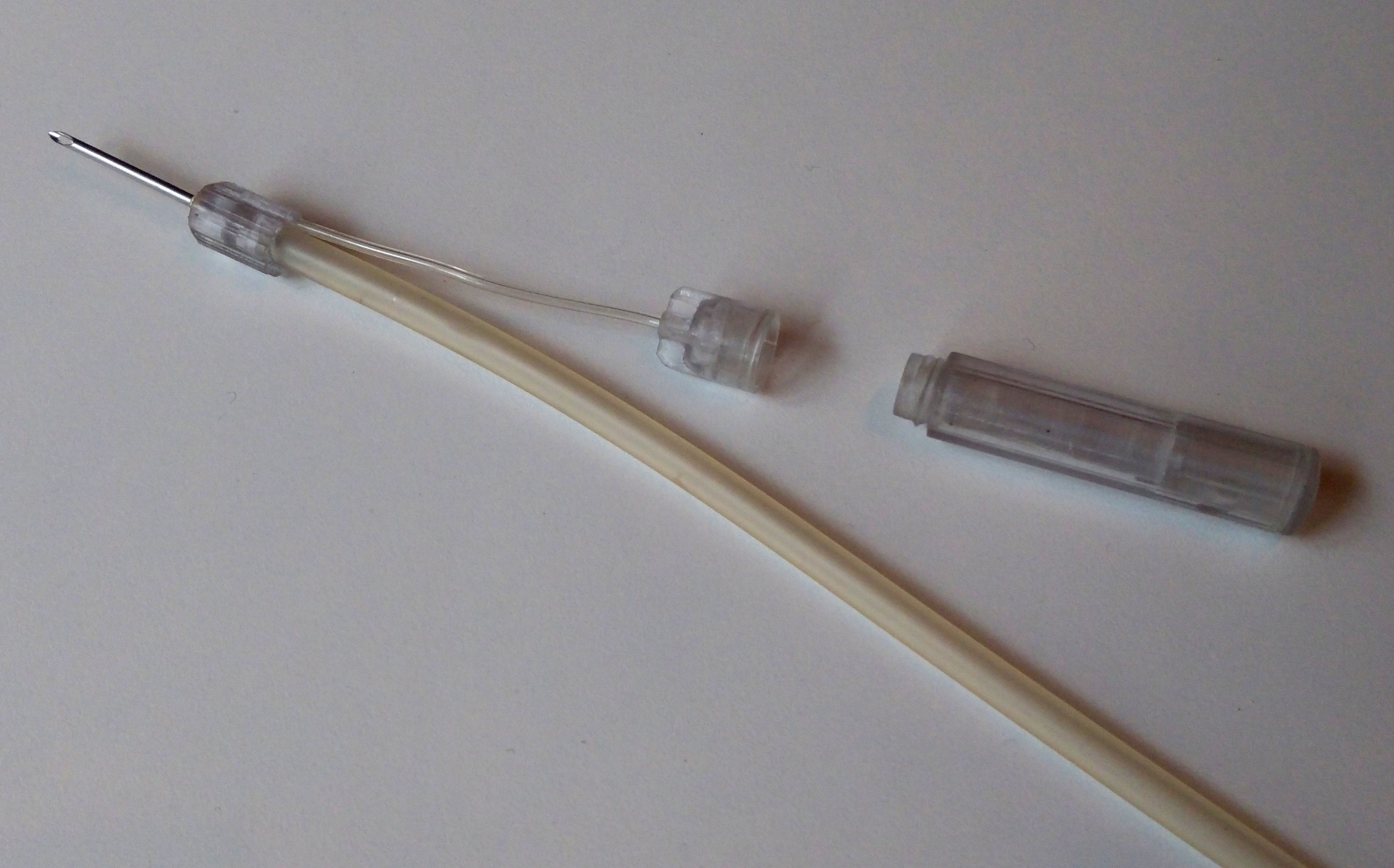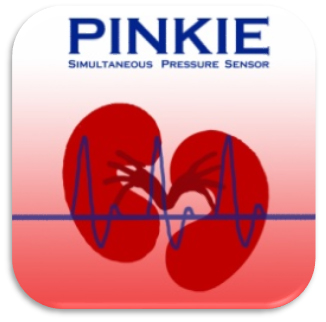A Medical Device for Intravascular Pressure Detection
Granted Patents: US n.11S185S240 And EU n. 3416545
(click on the numbers to view granted patents)
 |
"Pinkie", WHAT IS IT ?
It is a medical device for the direct detection of intravascular pressure.
The system is designed for use in hemodialysis treatments and aims to detect the value of blood pressure at the arterial side of the native or prosthetic arterio-venous fistula (FAV, FAVp), which is, as is known, direct function of the value of systemic arterial pressure of the patient being treated.
In particular, Pinkie continuously highlights the non-invasive sphygmic wave, in fact it is designed to "add" to the needles already used in hemodialysis treatments, through a connection that avoids exogenous contamination and at the same time allows the sensors to be kept outside the disposable, making the cost comparable with the devices normally used for vascular access.
"Pinkie" can be used in "single needle" mode, that is using only one pressure sensor, in correspondence of the needle nearest to the arterio-venous or arterio-prosthetic anastomosis, or in "double needle" mode, with two sensors , of which the second connected to the venous return needle of the extracorporeal circuit.
APPLICATIONS AND ADVANTAGES
In Hemodialysis the application of the device allows, as already mentioned, to detect the continuous intravascular sphyngal wave during the treatment, without any need to interrupt it during the measurement.
These data also allow to improve therapy in the following aspects:
- Management of flows for the preservation of vascular access.
The efficiency over time of vascular access is absolutely vital for patients undergoing hemodialysis.
The possibility of modulating the flow rates of the extracorporeal circuit as a function of blood flow, by means of a real-time intervention on hemodynamics managed by the hemodialysis monitor, avoids pressure stresses on the fistula, reducing traumatic suction phenomena to damage vascular endothelium or of the inner lining material of the vascular prosthesis, ultimately increasing the duration of the access itself.
- Management of patient dehydration
Mean Arterial Pressure (MAP) is a fundamental indicator of organ perfusion. The device can calculate in real time, by means of integration, cycle by cycle, the average pressure and report, in real time, its variation establishing a trend on the graph, allowing the dialysis machine to modulate the dehydration of the patient, with intervention by the operator or by means of an appropriate feed-back loop, based on the total weight loss (dehydration) determined by the nephrologist
- Safety with regard to correct positioning in the needle and prevention of disconnection
During the insertion of the needle and in the immediately following phases the pressure parameter detected, essentially on the most distal part of the needle, allows to evaluate, moment by moment, if this is correctly inserted. In fact, in the case of incorrect positioning, the sensor would detect an attenuated signal below a certain threshold, thus indicating the non-optimal cannulation condition of the vessel and the need for repositioning. On the other hand, an accidental displacement or disconnection of both the arterial needle, that is, the outlet needle, or the venous needle, in the "double needle pinkie" configuration, would instantly produce abnormal readings (alterations of the trend of the pressure curves) also detected by the mutual comparison of the data detected by the two sensors, until the termination of the pressure sensing, indicating, once again, the absence of the correct operating conditions of the equipment through the generation of warnings and alarms.
"Pinkie" therefore proposes itself as a valid tool for the surveillance in particular of the patient in home hemodialysis and of the unconscious or agitated hospital patient.
- Storicization, verification and comparison of systemic and vascular pressure data and data transmission in teledialysis (at a distance and at the Operative Center for Home Hemodialysis)
Pinkie can also guarantee the registration and transmission by telematic, for each treatment, of the changes in endoluminal pressure, and therefore, in addition to providing the recording of the data concerning the vital / patient parameters such as maximum, minimum, average and differential pressure, including obviously heart rate and rhythm (hypo evaluation and arterial hypertension), it can guarantee an absolutely complete, completely automated picture of the pressure evolution in vascular access, be it of a native or prosthetic nature.



